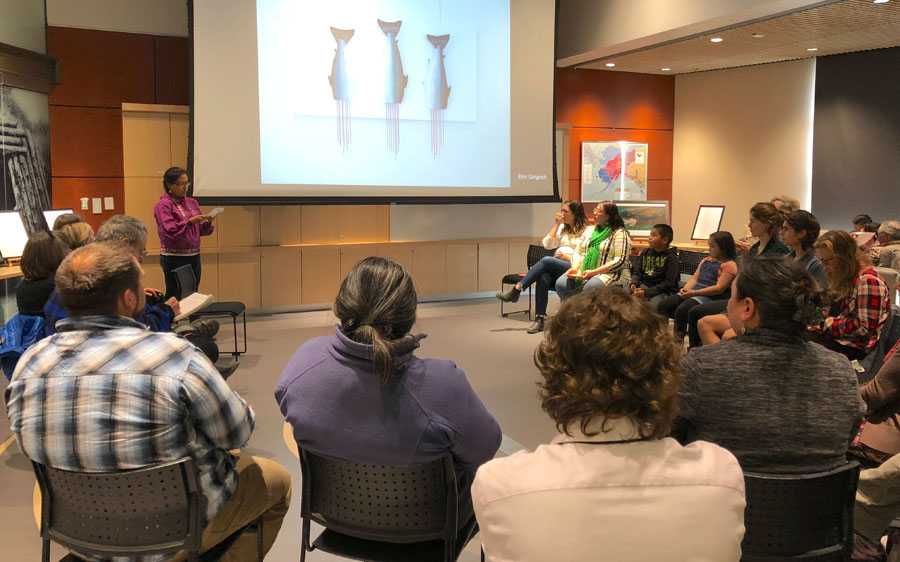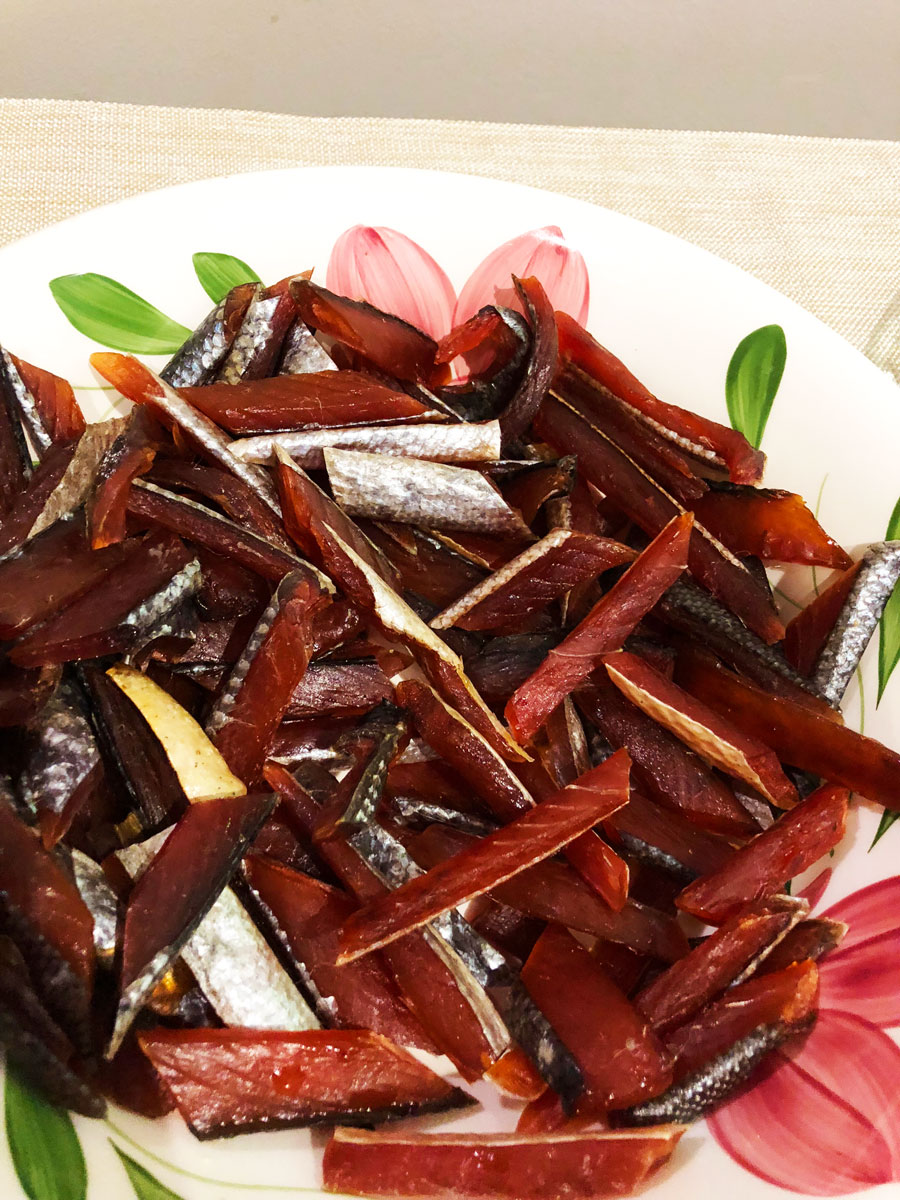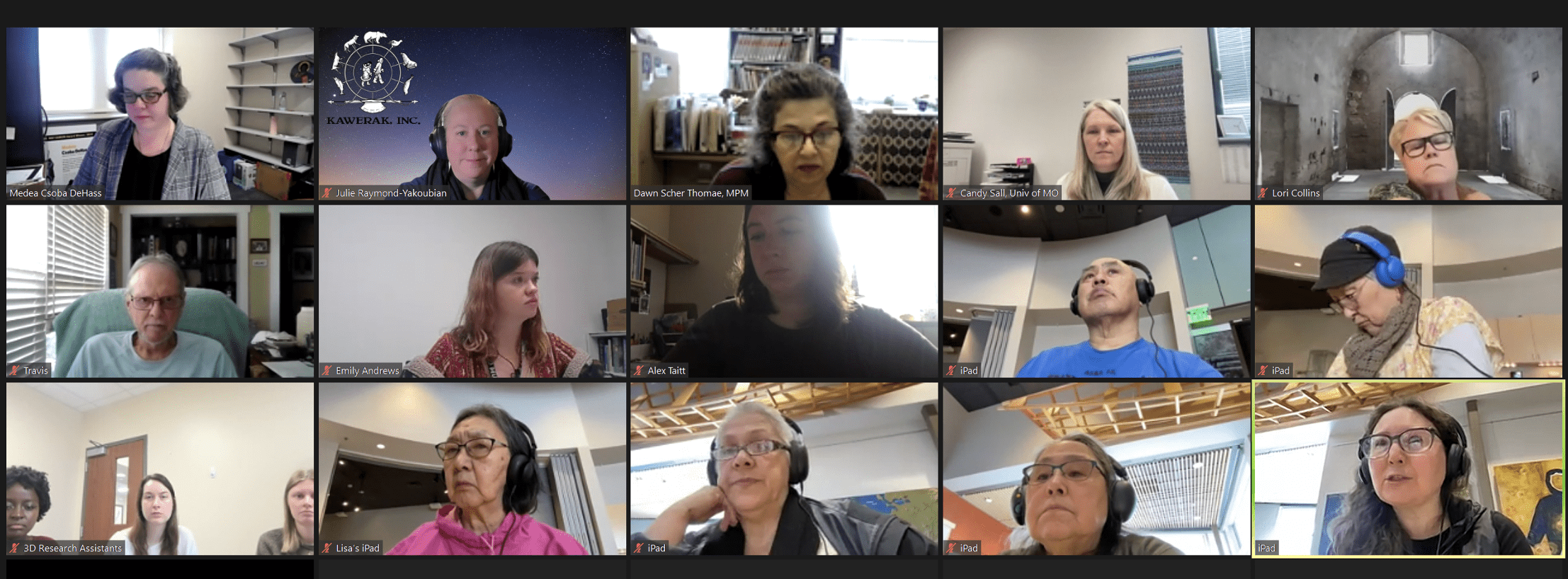On September 13th a diverse group of salmon enthusiasts gathered among one another at the Katirvik Cultural Center for the Salmon Shadows event. Over forty (40) people took the time to view artwork created by artists from across the state, share in salmon dip and smoked salmon preciously made by local hands, and discuss current issues entangled with salmon in some way.
The event was a project by current Salmon Fellows including Kawerak’s Social Science Director Julie Raymond-Yakoubian, Kevin Maier of UAA, Anjuli Grantham Curator of Statewide Services for Alaska State Museums, and Elsa Sebastian, a commercial fisher from Haines (Elsa was not able to make it to the Nome event). Throughout their time as fellows, members focus their energy on a project relating to…salmon of course. For each cohort, the Alaska Humanities Forum competitively selects a group of individuals from around the state representing cross-sector leaders to develop pathways that will shape the future of salmon.
The Salmon Shadows team stated, “The problems within Alaska’s salmon system are often obscured by Alaska’s much-touted salmon success stories. Some problems are acknowledged, but many others are unknown or relegated to the fringes. These ‘shadows’ – repressed or unspoken stories – are crucial to a full understanding of our salmon system. Salmon Shadows gathered creative work that shares and explores these shortcomings, critical issues, and fallacies within Alaska’s salmon system in an effort to lead to greater engagement, advocacy, and shifts in the system.” The team pursued this goal and put together a call for art, writing, and other creative work. The group received 80 submissions from 40 different artists which were then curated it into a traveling exhibit. The exhibit became the starting point for meaningful conversations that were had in Juneau, Petersburg and Girdwood in addition to Nome.
“The theory behind this initiative is that the stories we tell matter, informing the way we think, act, and make decisions. Community conversations about these stories (and, importantly, about what these stories obscure) could change the way people think, act, and make decisions,” the fellows determined. Involving all members of a community, regardless of profession or background gives a greater perspective on salmon issues’s impact and reach. The group in Nome marked the most diverse event from across the state with varied ethnic identity, professional background and connections to and interest in salmon (i.e. substance, commercial fishing/industry-based, research, management, personal, etc). Many of the attendees reported having a new perspective regarding salmon at the event wrap up. Discussion topics in small breakouts were diverse. Topics ranged from the cultural significance of salmon, to the use of plastics like disposable water bottles that go into the ocean, to inequity in fisheries, and the trauma associated with the Tier II subsistence fishery of the late 90s. Many other important Salmon Shadows were also brought up by participants.
The Salmon Shadows fellows would like to extend their sincere gratitude for the Tahbone family for sharing and preparing their precious catch for the event. They would also like to express their appreciation for the donation of the beautiful space at Katirvik Cultural Center to showcase the event.
The work complied from the Salmon Shadows events will be documented in the upcoming issue of the FORUM magazine (check the Alaska Humanities Forum website, www.akhf.org for more information). Some of the individuals who participated in a Salmon Shadows gathering are planning to keep generating discussion and dialogue by bringing the event to other communities in Alaska.
To read more about the Salmon Fellows program please visit https://www.akhf.org/alaska-salmon-fellows.






